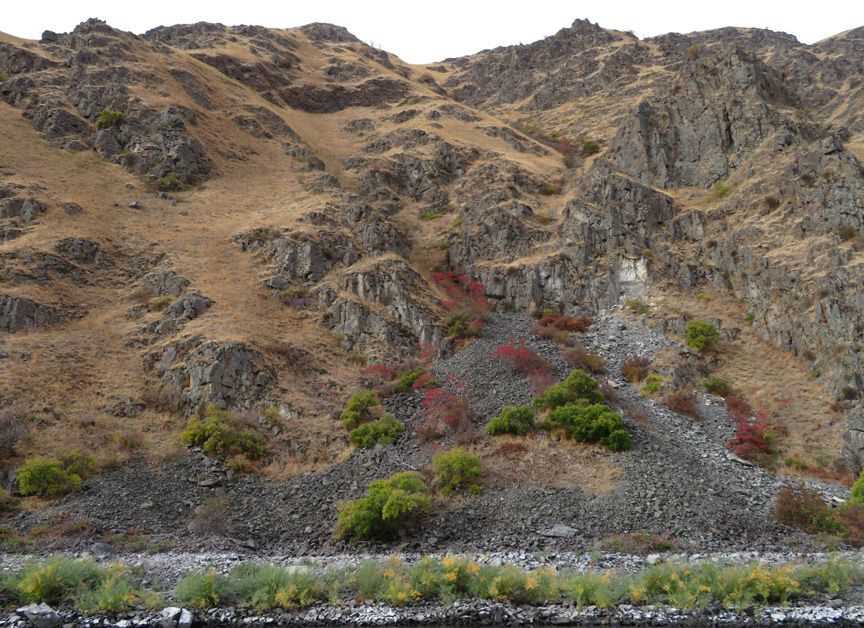At 0630 National Geographic Sea Lion was making her way on the dark waters of the Snake River toward the dock at Clarkston, Washington, where we were greeted by a spectacular sunrise with the sky flaming orange and pink. Soon we were off on jet boats for an exciting journey up the Snake River and into Hells Canyon. Rugged and remote, Hells Canyon is the deepest river-cut canyon in North America.
Our first stop was at Asotin (Place of Eels). Here we marveled at a beautiful outcrop of complex columnar basalt where perfectly formed columns rose above the river. Soon we were on the free-flowing Snake River. High cliffs formed by layer after layer of basaltic lava flows rose high above us. As we proceeded upstream on this cloudy morning, fall colors brightened the landscape as mulberry trees glowed golden and sumac smoldered crimson on the rocky slopes.
We passed the mouth of the Grand Ronde River, leaving the basalt flows and officially entering Hells Canyon and exotic terranes; exotic terranes are distinct pieces of land that have been added to the edge of the continent by tectonic processes. Now the rocky cliffs on either side grew steeper and even more rugged. On our starboard side a large flock of wild turkeys crossed a grassy space. At Cache Creek in Hells Canyon National Recreational Area, where we stopped for refreshments, we were amazed to see several Golden Eagles soaring above us. There is a small museum here and in the yard an orchard of apple, fig, plum and walnut trees—a green oasis among the usually parched hills. There was ample evidence that wild turkeys spend time here. Black bears come into the yard to eat walnuts, crunching the entire nut and spitting out the shells. We discovered bear and deer tracks in the sand below the boat ramp.
On we went upriver, safely negotiating frequent rapids in the powerful jet boat, we kept and eye out for wildlife. On a rocky ledge above us a small group of Rocky Mountain bighorn sheep rested, peacefully chewing their cuds. We turned around at the mouth of the Salmon River, the legendary “River of No Return”. We learned that the Salmon River is the source of the pale, sandy beaches along the Snake River. Tuning back downriver we saw a mule deer buck with a small group of does. Then we were thrilled to find, right on the rocky shore, a magnificent bighorn ram with heavy, fully curved horns. He posed there, seemingly unperturbed by our presence. Our cameras were clicking away.
At the Nature Conservancy’s Garden Creek Ranch we stopped for a hearty lunch. We dined on a large, open deck with views up and down the river. Further downstream at Buffalo Eddy, a deep pool in the river, our boat nosed in to the rocky shore and we had a good look at an enigmatic petroglyph. It consisted of a number of figures chipped into stone long ago and not fully understood today.
Arriving back at our ship, most of us went by motor coach to the Nez Perce National Historic Park to learn more about the history and culture of the Nez Perce people—whose aid to Lewis & Clark and their Corps of Discovery was vital to the success of the expedition. Back on board we enjoyed the camaraderie of social hour with our shipmates and newfound friends before the Captain’s farewell dinner. It was a very pleasant last evening on our journey of adventure on the Columbia and Snake rivers.









